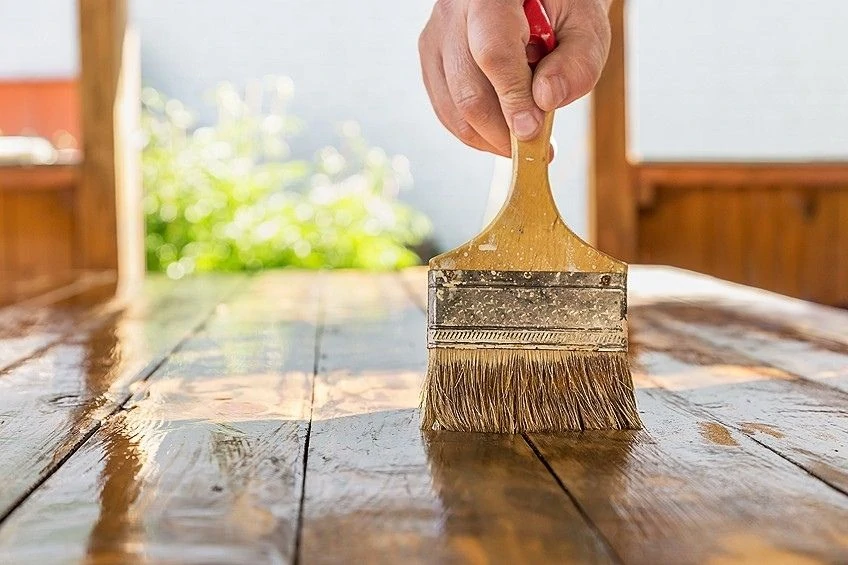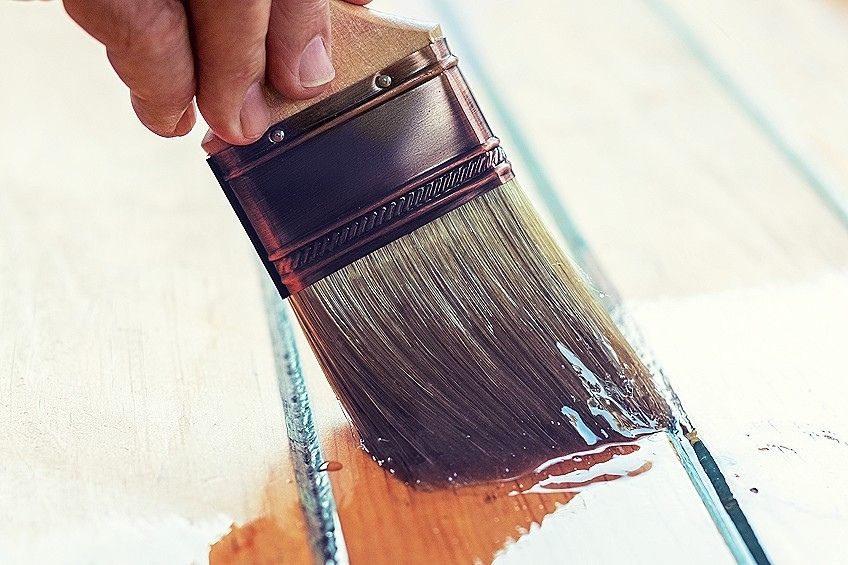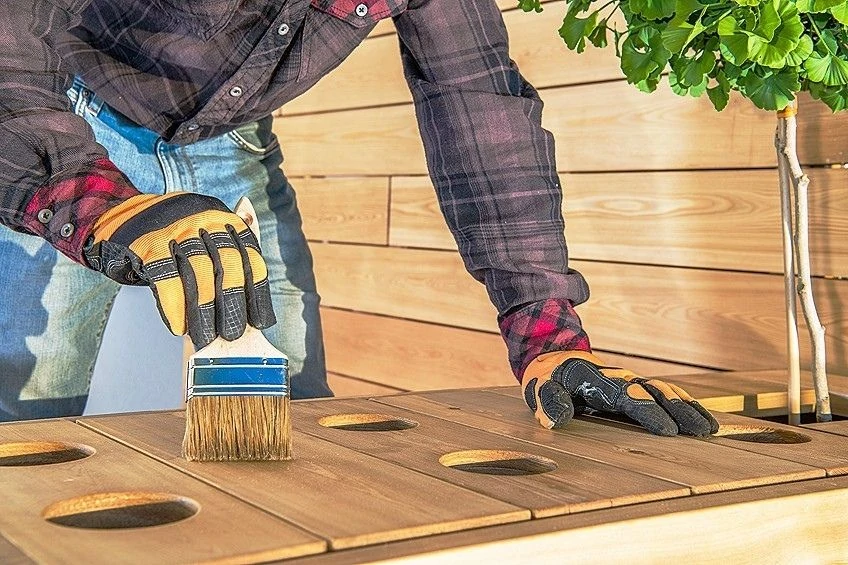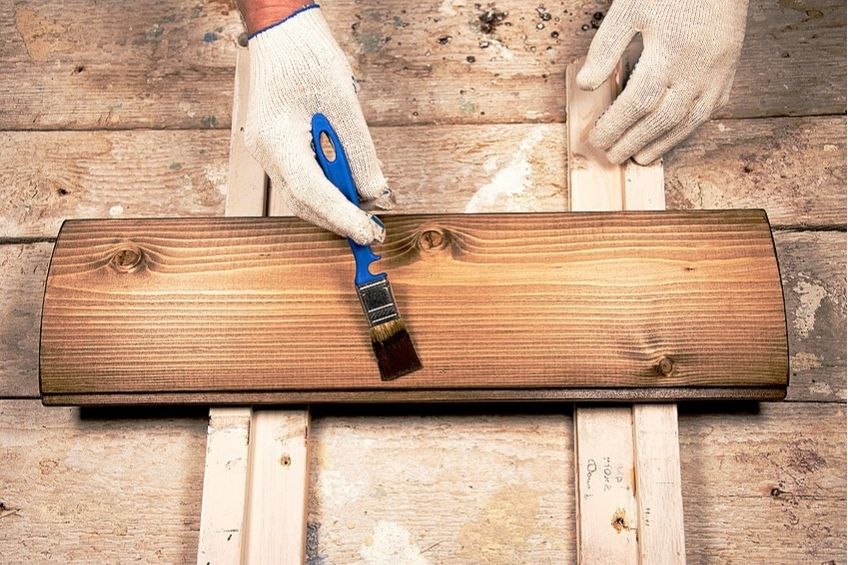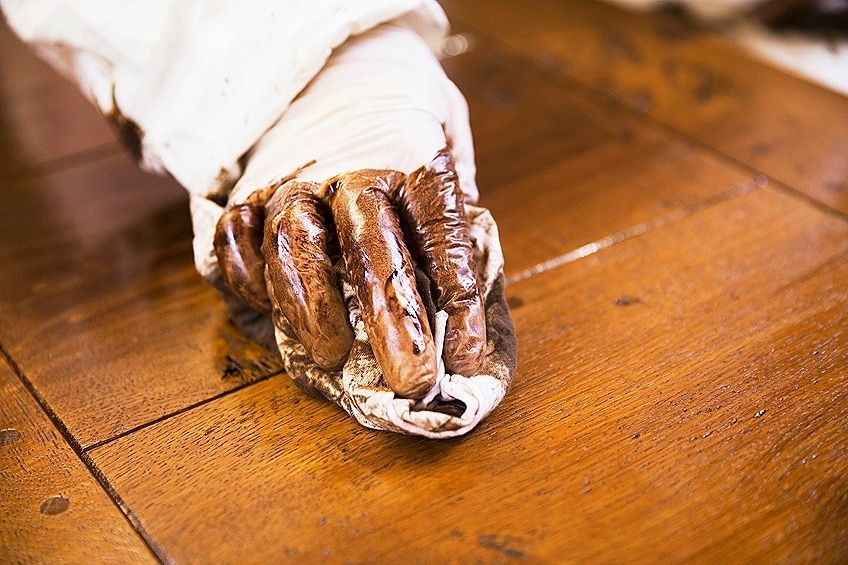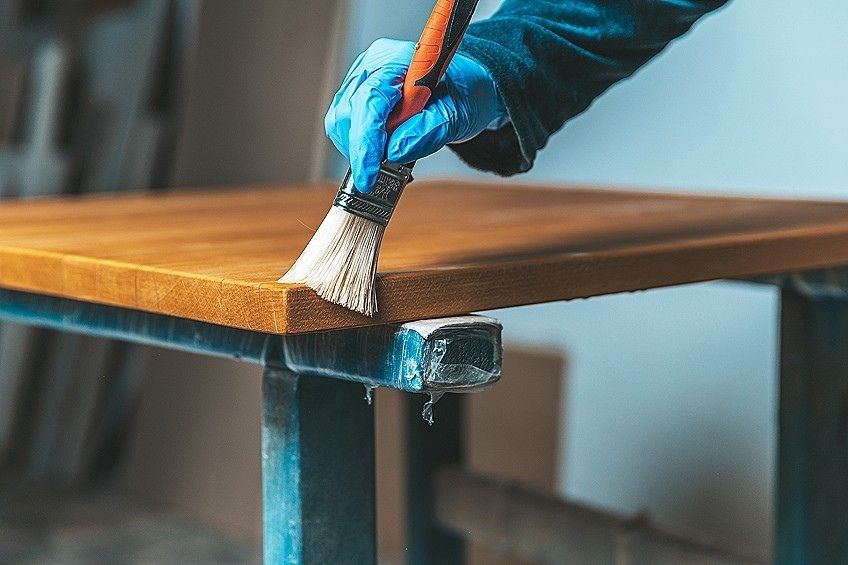How to Varnish Wood – Different Types of Wood Varnish Tutorial
This post may contain affiliate links. We may earn a small commission from purchases made through them, at no additional cost to you. You help to support resin-expert.com
Have you ever thought of giving your wood an attractive and glossy finish? Well, there is an easy technique that you can use to finish your wood. Some of the natural tones and grains of wood are better hidden and not visible. Thus, you can try varnishing your wood to protect and finish it. So, is varnish the same as paint? Varnish is often mistaken for paint and the two are completely different finishes. Let’s explore exactly what varnish and wood lacquer is, and how to find the best wood varnish for your project.
Table of Contents
How to Varnish Wood
The general rule of thumb when it comes to applying wood varnish is to clean the surfaces first and remove any dirt, dust, or existing varnish. It is important to remove any sticky stuff before you apply your varnish.
You must make sure that your area is free from dust so that it will not collect on the newly applied varnish. Dust can spoil the smoothness and sheerness of your project. When applying an oil-based finish, use a brush that has natural bristles. Synthetic bristles are suitable for water-based or acrylic varnishes. Rollers and rags also work on both finishes.
Every varnish is different depending on the product. Always follow the product’s information and instructions. It is not advisable to take shortcuts when using varnishes because this can affect the quality of the finish you will be expecting. The following are some of the tips you can use:
- Before you begin working you should make sure that your work area is clean. Sanding dust can be wiped off by a damp cloth.
- Work on a day that is not cold or humid. This is because too much humidity negatively affects the drying rate of the varnish. You might have an imperfect finish if dust or dirt can settle on your project before it has fully dried. Heat your room temperature to at least 20-25 degrees Celsius if you are working indoors. If you work in a hot room then your varnish might dry too fast, causing bubbles.
- Use a varnish remover to get rid of any existing finish or varnish. Remove any surface imperfections by sanding. After that take a damp cloth to wipe off any debris and leave the surface to dry.
- You can thin the first coat if you want, but it’s not necessary. Leave the surface to dry for 24 hours. Use fine sandpaper to sand the surface and a damp cloth to wipe off any remaining dirt with a damp cloth.
- Follow the grain when applying the first coat of varnish.
- Use fine sandpaper to sand the surface.
- You can apply as many coats as you want, but there should be a maximum of three coats. You can also apply additional coats to add more depth, but make sure you sand between coats. Sand with the grain to obtain a super smooth finish.
How Wood Varnish Hardens or Cures
It is important to understand how varnishes cure or hardens. These two ways are as follows:
- Immediate Hardening: Certain varnishes harden as soon as the solvent evaporates. In the absence of a thinner the resins dry and become solid. Immediate drying means that the solvents will take a few hours to dry, once they are dry the varnish hardens immediately and becomes ready for use.
- Gradual Hardening: These on the other hand have an ongoing reaction between the resins and the oils after the solvent has evaporated. This process can be ongoing for several days because the varnish would have already hardened and cured fully. Any exposure to air will result in oxidation.
The best factor that you can control is temperature, so it is very important to take note of where you will be working. Curing times are speeded up by high temperatures and lower humidity. However, to be on the safe side read the product instructions on the varnish you will be using to understand what you are dealing with. This is because some varnishes may harden too quickly and become brittle, without knowing.
Types of Varnishes
There are different types of varnishes available in stores. Getting to know all about them in detail can help you to make the perfect choice for your project. Varnishes offer excellent coatings, so it is important to get the right type for long-term results.
Wood Varnish Finish
These types of varnishes contain a solvent/thinner, drying oil, and a resin.
- They are the best wood sealants when compared to others
- They dry very slowly, are cheaper than polyurethane, and are not resistant to dust or dirt
- They offer a high level of UV protection, the finish is clear, durable, and can be used for marine finishes on either stained or bare wood
Oil-Based Wood Finish
This type of finish dries very slowly and emits a strong aroma compared to water-based finishes. However, oil-based finishes are more durable.
- You can easily apply it with a cloth or brush
- It is suitable for areas that are not commonly used because it can show alcohol and water spills afterward
Wood Lacquer Finish
This finish can provide an incredible, intense gloss finish. Wood lacquer is generally applied through a sprayer which gives it a smooth, even, shiny coating.
- Often considered the best among other wood sealants – it is more durable than shellac
- Dries quite fast compared to others because it is sprayed on
- It emits strong fumes, so it is advisable to use it in a well-ventilated area with precautions
- Not suitable to be used over old varnish or paint but can be used on furniture
- It is a very durable finish
Water-Based Wood Finish
You can use this finish on various wood surfaces. This is because it dries quite fast, so it is suitable for painted, stained, or bare wood.
- It is advisable to apply this finish using synthetic brushes
- It is not durable as compared to other finishes, but it is ideal for protecting decorated finishes
- The finish provides a clear coat with high levels of sheen and does not turn yellow with time
Polyurethane Wood Finish
This finish is in plastic form but turns liquid when it finally dries. It is a synthetic coating that is water-resistant. It is durable because it is the best clear coat that is suitable for wood protection.
- Prone to turn yellow when exposed to too much light unless it has been prepared to be UV resistant
- It is not advisable to use this sheen on outdoor surfaces, because it offers glossy and semi-gloss sheens that are best suited for kitchen cabinets
- Provides a natural sheen with a touch and appearance of various satins
Shellac Wood Finish
This is a natural finish that is very safe to use when dry. It is considered a more natural finish.
- It can easily get affected if it is exposed to moisture or spills, so it is not always recommended for wood. This is because it might break in the long run
- Shellac provides a hard finish that is best suited for furniture, antiques, and so on
- Because of the alcohol that is included in the mixture, it is quite easy to apply and dries very quickly
Furniture Wax
This wax is made from beeswax. If you want an even and smooth finish, then go for this furniture wax.
- If you want a matte finish, then you should use a brush or cloth when applying this wax
- It is not ideal for outdoor use
- You can reapply it several times to wooden surfaces, but it offers less protection when compared to other finishes
Frequently Asked Questions
Is it Possible to Varnish Bare Wood?
Yes, it is possible because varnish is suitable for unfinished and raw wood. Using varnish on bare wood will protect the wood from dirt, water, and so on. If you properly apply the varnish, your wood will have an incredibly smooth finish.
Is Polyurethane Better Than Varnish?
Varnish is quite resistant to UV rays as compared to polyurethane. This is because varnish consists of solvents, oils, and resins, so it has a high ratio of solids. This varnish finish will give a more tinted look when it is applied as compared to polyurethane. Polyurethane is water- or oil-based.
Is Wood Made Waterproof by Applying Varnish?
Marine varnish works well when it comes to making wood waterproof. It also contains UV absorbers which can protect your wood from damage and so on. The other varnishes only can make a hard-shell finish that does not turn yellow in the long run.
When working with wood, understanding the best wood varnish for the job is important. We hope that our wood varnish guide above has answered everything you needed to know about varnish and wood lacquer.


